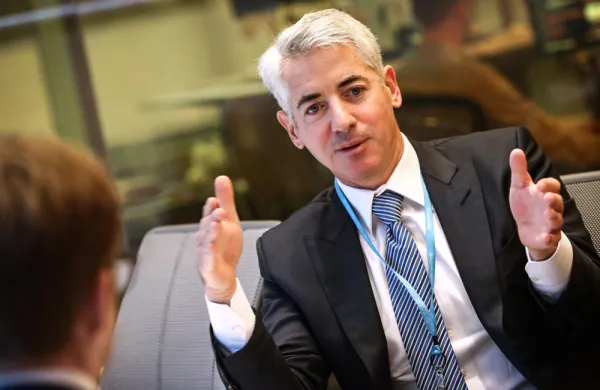Remember when the International Monetary FundWorld Bank meetings in Washington, D.C., were a boisterous block party for the world's bankers? Those days are long gone. With the recent discovery that al-Qaeda may have targeted the two Bretton Woods institutions, the mood in the capital for the October 23 annual meetings is apt to be both tense and sober. Security will be extratight for the 8,000 delegates from 184 countries and guests: The meeting has already been shortened because of safety concerns -- it was to have run from October 1 to 5.
Yet this meeting promises to have its compensations, quite apart from the improved state of the global economy. For one thing, antiglobalization demonstrators should be a far smaller, less obtrusive presence than in years past. What's more, even though this year's soirées will be lower-key than past shindigs, banks are once more entertaining on a grand scale. And Washington not only has some interesting restaurants to sample but also major new attractions, including the Smithsonian Institution's National Museum of the American Indian.
Expect stepped-up security wherever you go in the capital: more body scans, more briefcase and bag inspections, more ID checks and so forth. The IMF and World Bank buildings, where the formal meetings take place, are equipped with airport-style scanners for screening visitors' bags. And in the vicinity of both the World Bank and IMF, security personnel (the U.S. Secret Service is just one of the agencies charged with safeguarding the meetings) are stepping up patrols and randomly inspecting vehicles. Of course, both the Bank and the Fund will be taking additional precautions that they, sensibly, won't discuss.
Nevertheless, bankers may find it easier to buttonhole delegates this year, despite the abbreviated meetings. You can expect to have direct access to delegates' rooms, says IMF spokesman William Murray, provided "you're accredited to attend the meetings and the delegates want to see you."
In a sign of the times, terrorists rather than protesters are the chief security concern at this year's meeting. Only about 500 activists are expected to show up, according to Soren Ambrose, senior policy analyst of 50 Years Is Enough, a Washington-based activist network focused on the IMF and World Bank. The U.S. presidential elections are a powerful distraction. The IMFWorld Bank protesters' putatively nonconfrontational agenda is aimed at getting the IMF and banks to cancel developing countries' debts and at documenting how the Fund's and the Bank's exemptions from local taxes supposedly hurt D.C. residents.
Compare Ambrose's estimate of demonstrators with the situation two years ago, when 10,000 antiglobalization protesters converged on the spring IMF-Bank meeting; 650 were arrested. A year later 3,000 demonstrators descended on the IMFWorld Bank's semiannual meeting in Washington, though with little incident.
Although protesters likely won't be back in force at next month's meeting, parties will be. Washington hotel managers report their strongest meeting-related event business in four years. Gatherings are high-end, they say, but more discreet and work-geared than in the 1990s, when bankers and delegates traipsed from one black-tie open house to another. In the words of Paul Westbrook, general manager of the Ritz-Carlton, Washington, D.C., this year "there'll be fewer stretch limousines and more sedans." The World Bank, celebrating its 60th birthday, will hold a decorous reception for delegates on October 3.
The Hay-Adams hotel's rooftop aerie opposite the White House and the Willard InterContinental Washington's High Victorian party and meeting rooms are solidly booked for the duration of the meeting. At the Four Seasons Hotel Washington D.C., two international financial firms have each booked "elaborate" menus for 500, says general manager Christopher Hunsberger. The Madison reports a busy calendar of teas and diplomatic receptions; a European investment firm and a Middle Eastern delegation have separately reserved the hotel's 250-seat Dolley Madison ballroom for banquets. (Institutional Investor's invitation-only bash will be held at 9 p.m. Sunday, October 3, at the Sequoia restaurant in the Washington Harbor complex.)
The cozy new 86-room Ritz-Carlton Georgetown anticipates plenty of entertaining in its suites. And the even-newer 400-room Mandarin Oriental Washington, D.C., which opened in March, is planning for small receptions in its high-ceilinged function rooms and hospitality suites. Deutsche Bank is taking a detour from the hotel circuit: The German bank has rented the National Geographic Society's Hubbard Memorial Hall on Saturday night for a dinner featuring Henry Kissinger as the keynote speaker.
The reduced protester contingent should make getting around much easier this year. "The police have done this [security detail] enough that I don't feel threatened," says seasoned Washingtonian George Vassilou, a Wachovia Securities financial adviser whose office sits a couple of blocks from the World Bank. Nonetheless, he offers this advice: "If you're going out to dinner, dress down."
Washington seems to be more than ever a city of red-meat eaters, and if you're one of them, you need not go hungry. There's a new establishment earning strong endorsements in this steak-house town: Charlie Palmer Steak at 101 Constitution Avenue NW ([202] 547-8100). It joins the perennially popular Caucus Room in the Capitol Hill area ([202] 393-1300); the Capital Grille across from the National Gallery of Art ([202] 737-6200); the elegant Prime Rib near the World Bank ([202] 466-8811); and the sociable Palm at Dupont Circle ([202] 293-9091).
Ceiba (pronounced SAY-ba), a new pan-Latin restaurant in the landmark Colorado Building at 14th Street NW ([202] 393-3983), wakes up even jaded taste buds with crab ceviche in yellow gazpacho, smoky black-octopus tendrils, salted pineapple sorbet and pots of Brazilian estate coffee. Zaytinya on Ninth Street NW ([202] 638-0800) is perfect for noshing with colleagues on mezze, a Middle Eastern smorgasbord of spicy appetizers that you scoop up in puffy pocket bread.
At the Ritz-Carlton Georgetown ([202] 912-4100), which is built around an old city incinerator, the Degrees bar is, aptly, one of the hottest spots in town; Angus burgers are done to a turn for the well-heeled clientele. Chef Yannick Cam's Le Paradou, near the National Archives on Indiana Avenue ([202] 347-6780), prepares pricey but delectable French classics. For less-formal French, try Lavandou, a newly expanded country-style neighborhood restaurant on Connecticut Avenue in upper northwest Washington ([202] 966-3002) whose two-course early-bird special goes for $15.95.
Like certain U.S. senators, some restaurants seem only to get better with age. Consider the Georgetown set: Cafe Milano, for consistently good northern Italian ([202] 333-6183); Michel Richard Citronelle, for local fare with a French twist ([202] 625-2150 ); Sea Catch Restaurant and Raw Bar, for power dining in a 160-year-old warehouse on the C&O Canal ([202] 337-8855); and, for a touch of Americana, 1789 Restaurant, a period piece with polished service ([202] 965-1789). In downtown Washington the art deco DC Coast ([202] 216-5988) delivers seafood prepared in a range of styles, from Gulf Coast to California; owner Jeff Tunks was just named Chef of the Year by the Washington Restaurant Association.
The capital offers visitors some new sights this year. The National World War II Memorial, which opened this spring, resembles a wreath of granite set around a reflecting pool on the Mall. It honors the 400,000 Americans who died in the war and the 16 million who served.
The $200 million National Museum of the American Indian, southwest of Capitol Hill at Fourth Street and Independence Avenue, covers 10,000 years of the history of North and South American native peoples. From the Inuit in the Arctic to the Yagán in Tierra del Fuego, the descendants of the Americas' original inhabitants had a hand in planning the museum. Their main wish was that it embody a reverence for nature's elements, which are manifested in the play of light, water, earth and air throughout the building, a curvilinear, golden limestone pueblo. The exhibits draw from a collection of 800,000 objects -- including a 40-foot totem pole. The museum is open from 10 a.m. to 5:30 p.m. daily (www.americanindian.si.edu).
Hiding in plain sight at 800 F Street NW, a block from the FBI Building, is perhaps Washington's coolest new draw, the two-year-old International Spy Museum. There you'll find a replica of James Bond's Aston Martin DB5 and a German Enigma code machine from World War II. You might find it intriguing to key in your address and see how a global positioning satellite finds your home. The museum is open from 10 a.m to 8 p.m; admission is $13 (www.spymuseum.org; [202] 393-7798). A big seller in the gift shop is said to be a T-shirt eminently suitable for Washington or New York. It reads, "Deny everything."
Take the 'A' train
Edna St. Vincent Millay wrote that "there isn't a train I wouldn't take, no matter where it's going." Once you had to be an avid rail fan like the American poet to prefer the Metroliner to the air shuttle for getting from Washington to New York and back.
But Amtrak now has a speedier, sleeker, chic-er version of its intercity express -- the high-speed Acela, which cuts up to 30 minutes off the train-travel time between America's financial and political capitals and makes the ride more enjoyable in the bargain. The old train-versus-plane debate is becoming a lot less one-sided. That is especially true at this time of year, when sudden thunderstorms routinely delay afternoon flights. More than one out of every four planes coming into Washington's Reagan National Airport in June was late.
Which form of travel -- train or plane -- really is quicker, everything considered? The Acela, built entirely on U.S. soil, travels as fast as 135 miles per hour on this run, consistently making the 226-mile trip in about two hours and 45 minutes. And because train passengers board at Washington's Union Station, just four blocks from the Capitol, and get off at Penn Station in midtown Manhattan, they are spared the 20- and 40-minute cab rides, respectively, between D.C. and Reagan and LaGuardia International Airport and Manhattan.
To be sure, a plane travels roughly four times as fast, covering the distance in about an hour. But that's just flying time. Airlines now want even shuttle passengers to show up an hour before their flights to allow for security screening. Acela passengers can arrive 15 minutes before boarding.
The Acela has two classes: business and first. Each has laptop outlets and four-channel audio. First class, however, has more commodious seats: 20.5 inches wide, compared with 19.5 inches in business class and 17 inches on the Delta Shuttle. Passengers seem to like the seating arrangements: single seats down one side of the carriage, two abreast down the other. First-class passengers have their own waiting rooms at Union Station and Penn Station, and a designated quiet car lets first- and business-class passengers escape cell phone chatter.
Perhaps the key difference in amenities, though, is that Acela's first-class car serves complimentary meals and beverages (alcohol as well as soft drinks) at your seat, airline-style. Typical breakfast entrées include omelets; fruit plates; and ham, egg and cheddar on an English muffin. Business-class travelers serve themselves in the stylish café car; a beer and a sandwich cost about $10.
The difference in service is reflected, of course, in price: One-way first class on the Acela is $223; one-way business is $151 (for round-trip, just double the fares). The Delta Shuttle is $242 one-way.
The Acela makes 15 daily round-trips during the week, with departures on the hour (except at 10 a.m.) from 5 a.m. to 8 p.m., but only a couple of round-trips on weekends. For sentimentalists -- or savers -- the old Metroliner (one-way fare: $137) is still running for now, on a reduced schedule. -- L.M.R.





